

Comparison of the Agricultural Use of Products from Organic Waste Processing with Conventional Mineral Fertilizer: Potential Effects on Mineral Nitrogen Leaching and Soil Quality. 3.1.
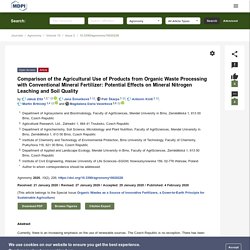
Basal and Substrate-Induced Respiration The measured results of BAS (Figure 2) show the different effects of DG and CP on soil basal respiration in comparison to MF. As compared with the NPK variant, a significantly highest level of BAS (> 0.16 µg CO2 g−1 h−1) was detected in variants where identical doses (150 kg N ha−1) of DG and CP were applied.
On the other hand, there were only insignificant differences between the control and the DG 220, DG 150, DG 80, and CP variants. Farmers Protest New Laws That Could Expand Industrial Food Production in India - Johns Hopkins Center for a Livable Future. Dilli Chalo!
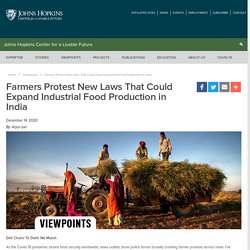
To Delhi We March As the Covid-19 pandemic strains food security worldwide, news outlets show police forces brutally crushing farmer protests across India. I’ve watched footage of police using tear gas and water cannons, building barricades and barbed wire fences, and destroying roads and highways to impede marching farmers outside of Delhi. How Should We Regulate Agriculture That Doesn’t Produce Food? This post is the sixth in a series—Connecting Agriculture Policy to Your Health—by CLF-Lerner Fellow Lacey Gaechter.
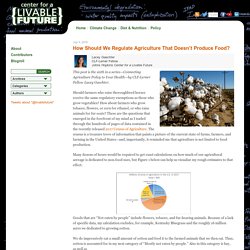
Should farmers who raise thoroughbred horses receive the same regulatory exemptions as those who grow vegetables? How about farmers who grow tobacco, flowers, or corn for ethanol, or who raise animals for fur coats? Prairie Soils and Crops. Principles of Crop Production 1 CM Author(s): David J.
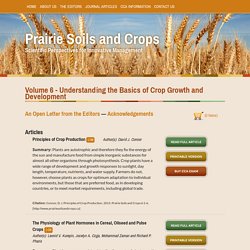
Connor. Dynamics and management of crop-weed interference. Center for a Livable FutureCenter for a Livable Future. This post is the fourth in a series—Connecting Agriculture Policy to Your Health—by CLF-Lerner Fellow Lacey Gaechter.
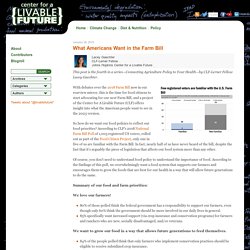
With debates over the 2018 Farm Bill now in our rearview mirror, this is the time for food citizens to start advocating for our next Farm Bill, and a project of the Center for A Livable Future (CLF) offers insight into what the American people want to see in the 2023 version. So how do we want our food policies to reflect our food priorities? Center for a Livable FutureCenter for a Livable Future. In 1933, President Roosevelt’s New Deal included the creation of the first-ever Farm Bill, a response to the Great Depression and the Dust Bowl, the epic drought disaster that was devastating the agriculture sector in the United States.

Today, the goals and impact of the Farm Bill couldn’t be any further from what was intended almost 90 years ago. Earlier this month, the Johns Hopkins Center for a Livable Future (CLF) hosted a panel discussion on the Farm Bill, with authors Christina Badaracco and Dan Imhoff, and Adam Sheingate, Johns Hopkins professor of political science. The original intent of the Farm Bill, Imhoff said, was to incentivize farmers to protect and preserve wild habitat so that ecosystems could stabilize and recover, and this was going to be achieved by discouraging the bad farming practices that contributed to the Dust Bowl and by preserving natural resources.
The other critical goal of the bill was to feed the burgeoning population of hungry Americans. Rep. Louise Slaughter says 80% of antibiotics are fed to livestock. A salmonella outbreak traced to California chicken processing plants recently prompted Rep.
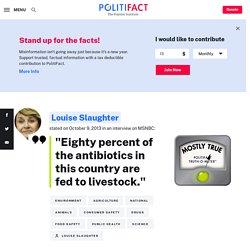
Louise Slaughter, D-N.Y., to raise a pet issue on MSNBC: antibiotic-resistant bacteria. The federal shutdown was limiting government’s ability to track infection, she said. But then she pointed to a deeper issue: "the overuse and ruination of antibiotics. " Agriculture and Food. The Sierra Club supports agricultural policies and practices designed to provide abundant healthy food, fiber and other services for all communities while maintaining the fertility of the soil and protecting the Earth's climate and the native diversity of plants and animals.

Since humanity first adopted domestic agricultural practices we have been producing food, fiber, medicinals and fuels, activities which have had and continue to have significant environmental impacts. These policy guidelines seek to promote practices that reduce or mitigate those impacts. Agriculture is also inherently cultural: every system of food production has the capacity to generate not only economic benefits and ecological capital, but also a sense of meaning and connection to natural resources. Therefore, we advocate an expeditious transition to farming methods that maximize both cultural and biological diversity, benefit local communities, improve rural livelihoods and preserve natural resources. Well-Fed: – Food & Water Watch. Part 1: Deciding what and how to farm should be left to farmers, not corporations.
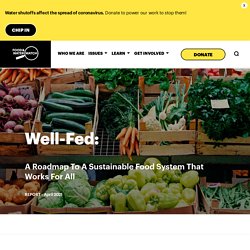
Corporate monopolies control food production. Today’s supermarkets seem like the pinnacle of choice and variety. But consumers might be surprised to learn that this choice is really a façade, and that a few companies dominate the market in each food category. OEFFA food safety planning guide 2017.
USDA FDA Ag Refs. CERCLA and EPCRA Reporting Requirements for Air Releases of Hazardous Substances from Animal Waste at Farms. Overview Two environmental laws, the Comprehensive Environmental Response, Compensation, and Liability Act (CERCLA) and the Emergency Planning and Community Right-to-Know Act (EPCRA), require reporting of releases of hazardous substances that meet or exceed reportable quantities within a 24-hour period.

The purpose of the notification is for federal, state, tribal, and local officials to evaluate the need for an emergency response to mitigate the effects of a release to the community. Amendments and Requirements Final EPCRA Amendment. Feed the world. FOOD FACTS. Gardens. Organic Farming. Soil. Useful Plants. COMPOST. ECO 2021. ORGANIC. Industrial Organics.